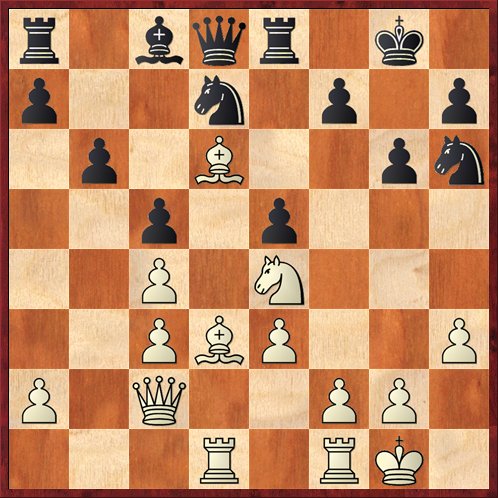After taking most of the month of December off, I’m back and here to wish you a happy new year chessically and otherwise.
To get 2012 off to a fast start, I’m playing in the New Year Open at Santa Clara, a Bay Area Chess event. Unfortunately it does not have very many “big-name” players, perhaps because the Berkeley International, which starts tomorrow, may have siphoned off some of the stronger players in the San Francisco area.
Nevertheless, the New Year Open does feature two International Masters, Milos Pavlovic and Emory Tate, who both started the tournament 3-0 and thus faced each other in round 4. Unfortunately I left before their game finished. If I had to hazard a guess I would say that Tate had more winning chances, but I don’t know if the position was winning.
After Pavlovic and Tate it’s a steep drop-off to the only two National Masters in the tournament, Mike Splane and yours truly. Mike started out 2-1 but for reasons unknown to me forfeited his game in round 4. I’m doing okay, at 2½-1½, with two wins and a draw against class-A players and a loss against Pavlovic.
There is also a huge squadron of teenaged experts and class-A players, and it will be very interesting to see who rises to the top. I think that the player in second place after round 4 will be Rayan Taghizadeh, who defended staunchly against Siddharth Banik’s unsound sacrifices in the game on board 2. Rayan has a score of 3½-½ (I think) and will probably be paired against the winner of Pavlovic-Tate in the next round.
I think my best game so far was against Josh Cao, a high-1900 player, in round one. I’ll show just one position from the game:
White to move.
I’m not sure I can quite say “White to play and win,” but it’s close. White’s bishop on d6 is a real thorn in Black’s side. The only problem for White is that it’s also trapped! If Black can get his pieces untangled, he might even have the advantage because of the weakness of White’s pawns and the immobility of the bishop on d6.
I chose a move on the spur of the moment that was designed to cause Black the maximum difficulty in mobilizing his pieces. It also has a hidden tactical trick. Do you see my move as well as the trick?
The answer is 18. Qa4! I played this in the hope that Black would fall for 18. … Bb7? 19. Qxd7! winning a piece. However, the nice thing about 18. Qa4 is that it doesn’t just set a trap — it poses a ton of problems. If Black defends against the fork trick with 18. … Kg7, it seems as if 19. Nxc5! just wins. I’m not sure that Black can hold with moves like 18. … Nf5 or 18. … Re6Â either.
However, I didn’t have to figure it out, because Black found another way to fall into the fork trick: he played 18. … Nb8? Obviously his idea was to play 19. … Bd7 next, but he didn’t get a chance because I played 19. Qxe8+! and Black resigned. I like the way that Black’s four queenside pieces are all set up for the next game.



